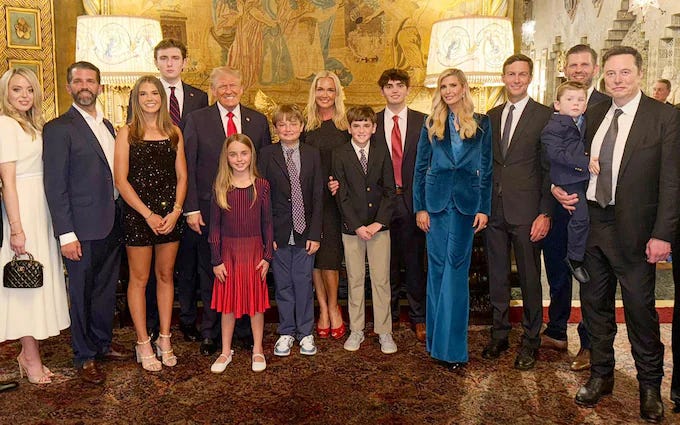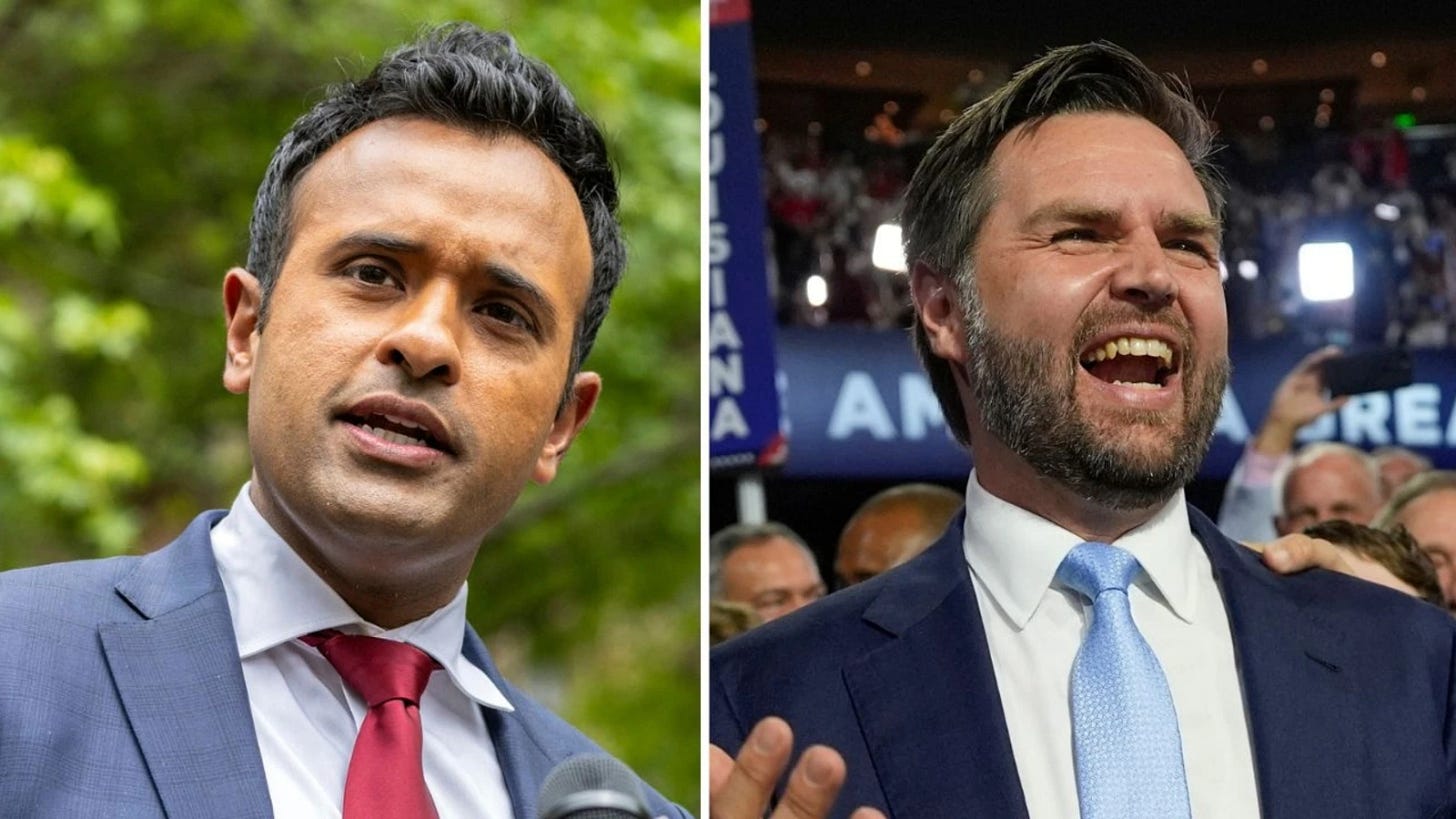The second Trump term will prove to be even more consequential than the first. It will be the first true test of government for the new Republican Party—a party that, since 2016, has been transformed. Not just by Trump’s brand of populism but also by a powerful infusion of talent, ideas, and capital from Silicon Valley. This alliance has already proven transformative, completely reshaping the party.1
To illustrate this transformation, we have to back up a bit. When Trump ran for office in 2016, it was as much a publicity stunt as a serious attempt at becoming the President of the United States. His campaign was centered on scathing criticism of what he described as an incompetent and corrupt ruling class, whether they were Republicans or Democrats. Even though he ran as a Republican, he really wasn’t one in the traditional sense. Trump was an outsider with no political base and no experience, which was precisely what appealed to his supporters.
Yet this outsider status caused significant challenges once Trump assumed office after his surprising victory over Hillary Clinton in 2016. Governing effectively requires a political party with a deep bench of trusted appointees, ready to carry out the administration's agenda. As a newcomer, Trump had no established political network of loyalists and policy experts. To compensate, he turned to family members and close business associates he trusted, like Ivanka Trump and Jared Kushner, both of whom took on senior advisory roles in the White House.
These appointments, however, were only a drop in the bucket. An incoming U.S. president typically needs to make over 4,000 political appointments across the entire executive branch, from top Cabinet positions like Secretaries of Defense, State, and Treasury to Ambassadors, Federal Judges, and leaders of independent agencies. Lacking a solid MAGA talent pool, Trump largely filled these positions with established Republicans whose views often did not align with his populist, anti-establishment agenda. 2
Fast forward eight years, and the political landscape has shifted dramatically. Trump has had time to cement his influence over the Republican Party and behind the scenes he is backed by new allies from the world of technology and venture capital. Leading this charge is billionaire investor Peter Thiel, a vocal techno-libertarian who amassed his fortune as a co-founder of PayPal and an early investor in Facebook. Thiel saw Trump’s presidency as an opening to push for a more disruptive, innovation-centered government willing to sidestep traditional norms. Thiel envisions a political system that challenges the status quo and is fiercely skeptical of bureacratic power and regulations that he believes stifle innovation.3
Thiel has been instrumental in cultivating like-minded figures within the Republican Party. One of his most significant recruits is J.D. Vance, the author of Hillbilly Elegy who went from being a Trump critic to one of his strongest Senate allies. Thiel’s backing was pivotal in Vance’s Senate campaign in Ohio, and their partnership is long-standing; Vance previously worked at Thiel’s investment firm, Mithril Capital.4 Together, they’ve helped reorient the GOP’s messaging to embrace a techno-libertarian philosophy that blends Trump’s populism with a deep skepticism of government overreach, emphasizing the power of technology and the dangers of bureaucratic stagnation. Thiel’s influence marked a turning point, signaling that Silicon Valley was no longer an exclusively liberal stronghold.5
Adding to this lineup is Vivek Ramaswamy, a biotech entrepreneur and another rising star of the GOP who brings Silicon Valley’s anti-regulatory fervor to the party. Like Thiel, Ramaswamy is a staunch critic of “woke” culture and has actively spoken against what he sees as radical leftist propaganda. His entry has solidified the GOP’s embrace of a new brand of conservatism that champions free markets, regulatory rollbacks, and a cultural counter-movement against wokeism, DEI and gender ideology.6
With Elon Musk throwing his full weight behind Trump and the GOP a couple of months ago, the party has definitively set out on a new course. Musk’s support was pivotal in getting Trump re-elected to the White House. The worlds richest man has large ambitions to reform the Federal Government and will most likely lead a ‘Department of Government Efficiency’ to slash spending and cut government workforce.7
The coalition of Trump, Thiel, Vance, Ramaswamy and Musk marks a seismic ideological shift. Today’s Republican Party is infused with a techno-libertarian ethos that prizes individual freedom, technological progress, and a skepticism of entrenched institutions. They share a strong aversion to “woke” culture, which they view as a restrictive ideology that hinders free expression and innovation. This shift represents a dramatic departure from the GOP of previous generations, which was rooted in social conservatism and business pragmatism. Instead, the new GOP is open to bold, untested ideas, inspired by Silicon Valley’s most disruptive thinkers.8
Because of the Republican majority in the Senate and a now also more than likely majority in the house, the GOP could have a real two year window to implement their reforms. Vivek and Musk have already called this a once in a lifetime opportunity, which reflects the sense of urgency within the party. The Democrats will try to oppose the GOP agenda every step of the way, but they are in a much weaker position to do so vis a vis Trumps first term in office.9
The second Trump term will therefore not simply be a continuation of the first; it will be an unprecedented test of this new techno-libertarian, populist fusion. The new GOP is increasingly prepared to challenge long-standing norms and adopt a radical new approach to governance—one that prioritizes technological advances, trims bureaucracy, and seeks to disrupt traditional power structures in ways never seen before in American politics.
The vision of a leaner, tech-driven government could lead to increased efficiency and innovation, yet it also raises questions about accountability, the preservation of essential public services, and the potential unintended consequences of deregulation. While supporters see this as a chance to modernize governance, others warn of challenges in balancing innovation with the stability and oversight that traditional institutions provide.
With reform, especially radical reform, comes risk. The potential impacts—both positive and negative—of such sweeping changes deserve an article on their own.








